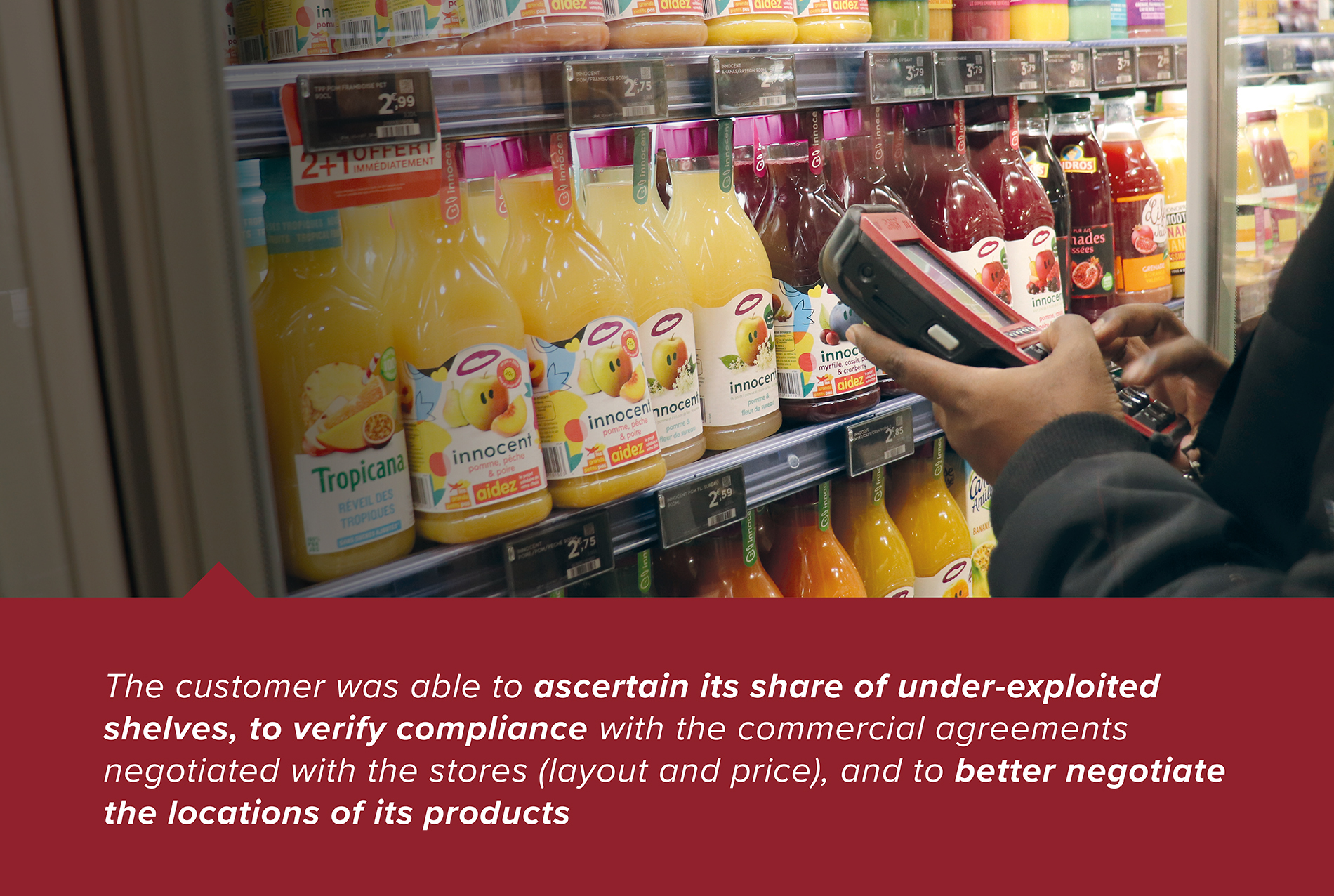Compliance Audit to Gain Market Information for Drinks Company

A company specialising in market research in the field, was required to establish a report for one of its clients on its brands within retail stores, as well as those of its competitors, within various points of sale.
REQUIREMENT
The market research company had to provide a major drinks producer and distributor with key data to act in a highly competitive market, so required RGIS to provide the following:
- Visit more than 300 hypermarkets and supermarkets across France
- Audits to be conducted over two months (Oct–Nov) during opening hours
- Audit and report on the following for the customer’s brand of soft drinks and spirits:
- Allocated shelf space compared to the competitors’ products
- Verify the price as negotiated with the store
- On-shelf stock availability of products
SOLUTION
The market research company partnered with RGIS to complete the compliance audit survey for market information project, and provided the following:
- Scheduled a team of eight experienced RGIS auditors for the duration of eight weeks
- Planned between 35 and 40 compliance audits per week
- Carried out the following compliance audits in both the soft drink and spirit departments:
- Dimensions and type of shelf
- Location of product within the store
- Scanned each product category
- Quantity of each product on the shelf
- Calculation of the maximum products per location
- Performed price audits and out of stock item tracking simultaneously
- Audited the refrigerated drink display cases present in each point of sale (quantity, brand and number of doors)
RESULT
The market research company found by outsourcing the compliance audit survey for market information project to RGIS, the following results were achieved:
- More than 300 accurate audit reports were produced, which is 234,351 SKUs in two months
- Enabled the customer of the market research company to obtain, within a very short time, a precise assessment of its presence in stores compared to its competitors in the various points of sale
- Compared the customer’s products to the competition and measured the evolution of the Product Data Management (PDM) from one year to the next
- Calculated the maximum storage capacity (in height and depth) per location
- Checked that the merchandising recommendations (planograms) and the prices negotiated with the brands were respected
- Evaluated the breakage rate of products on the shelves